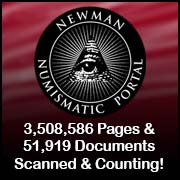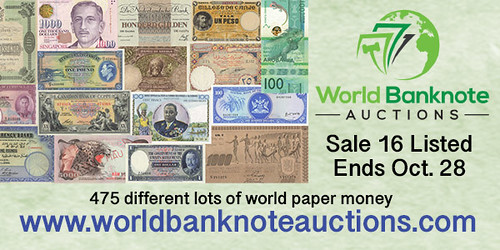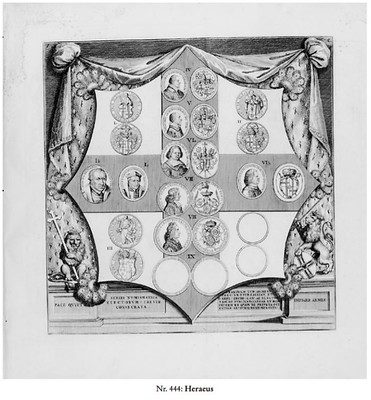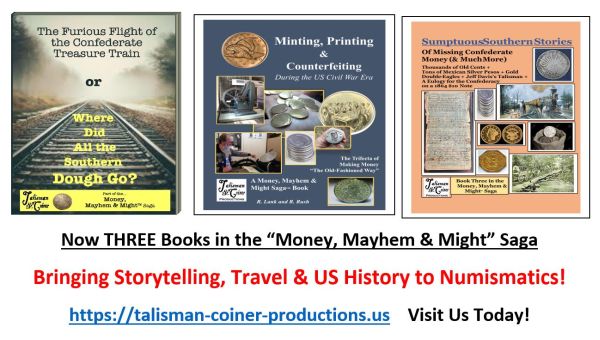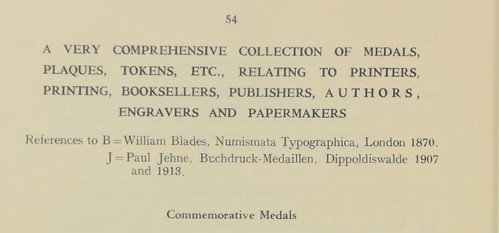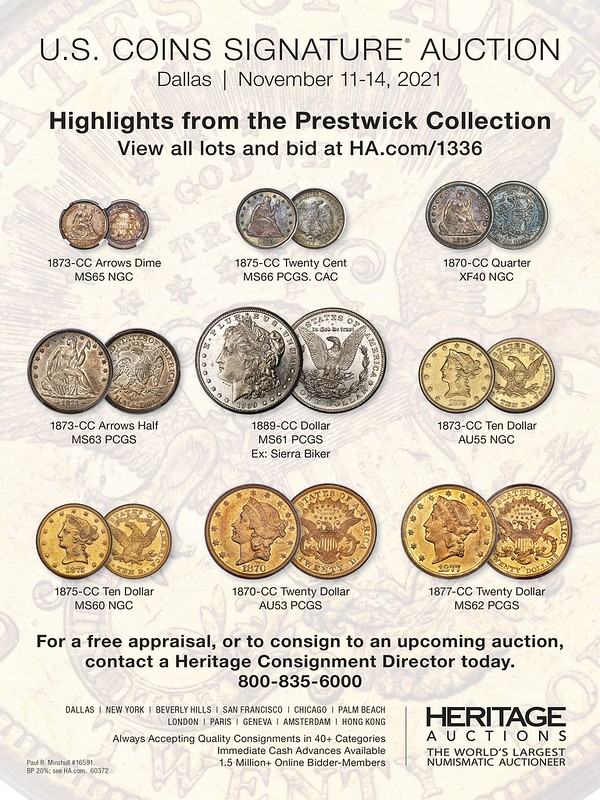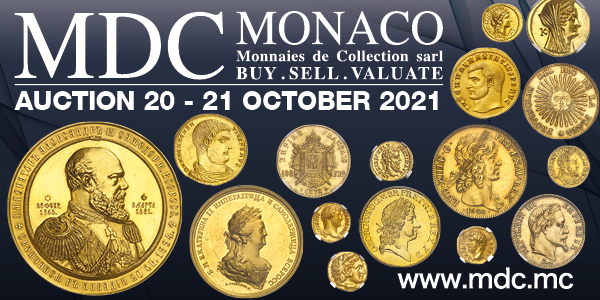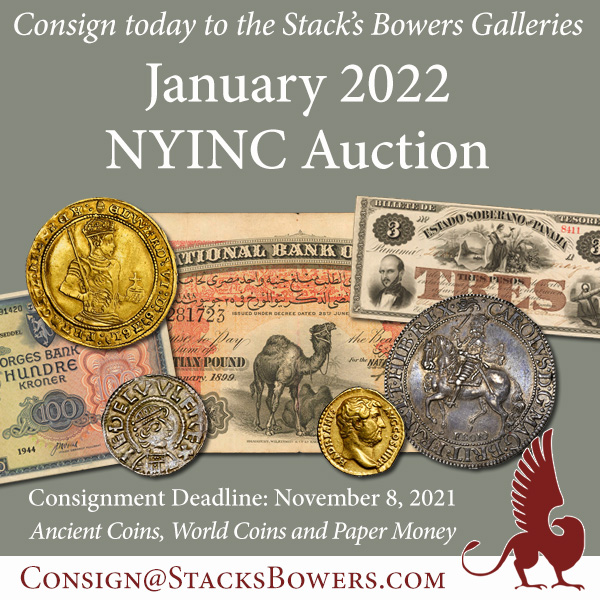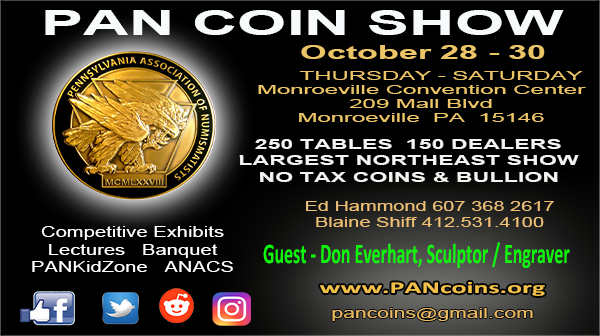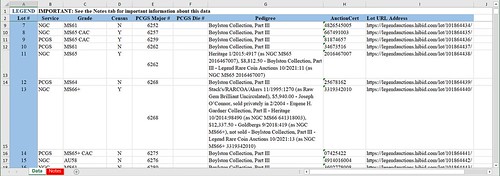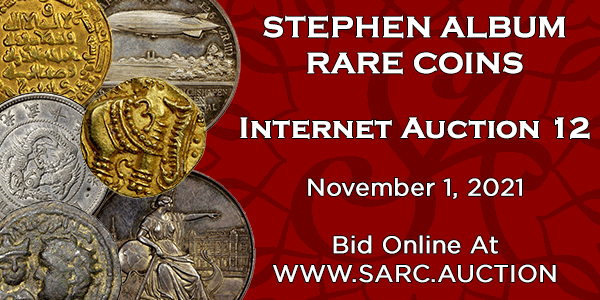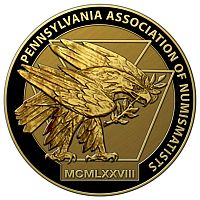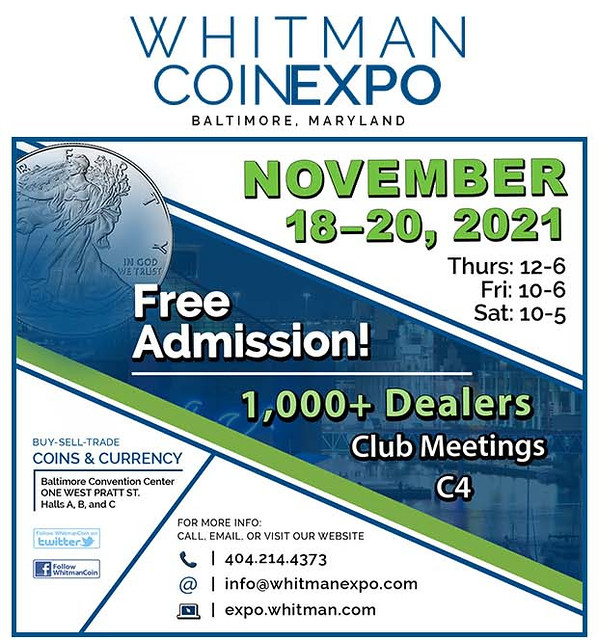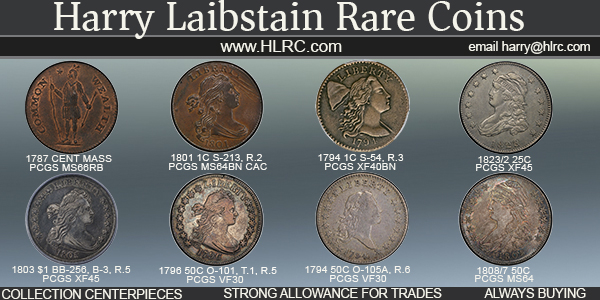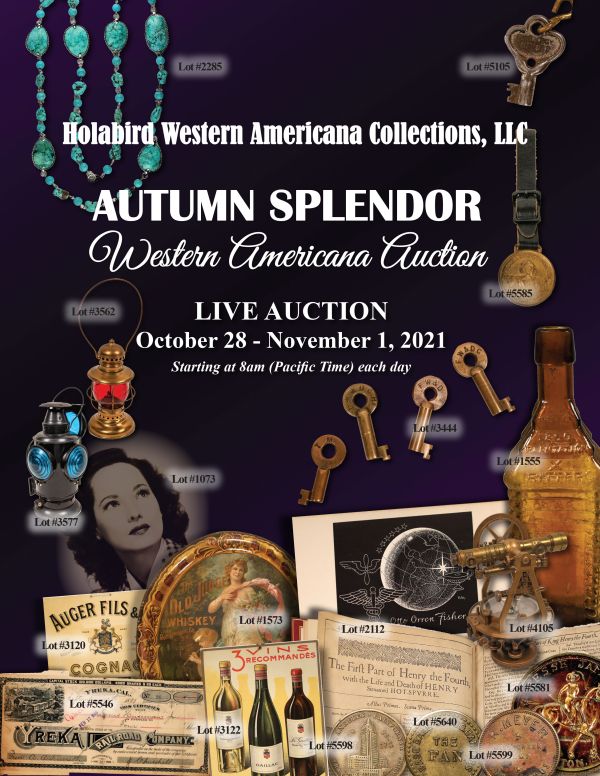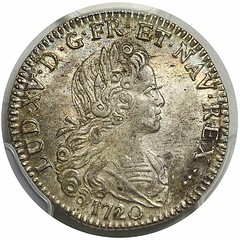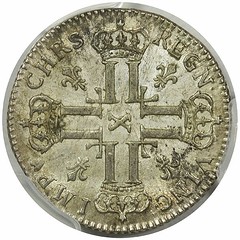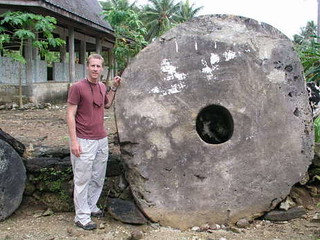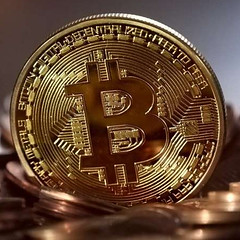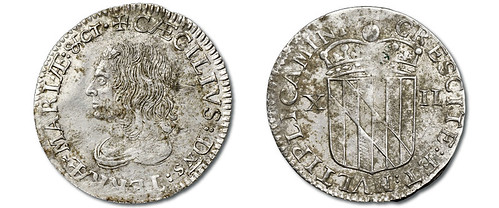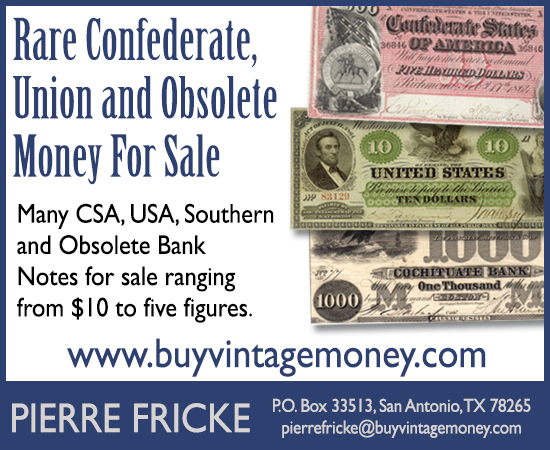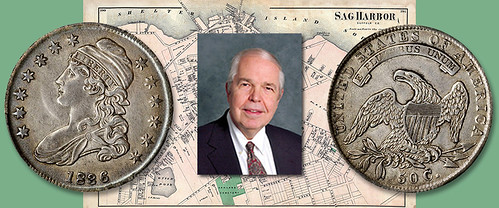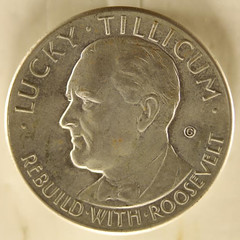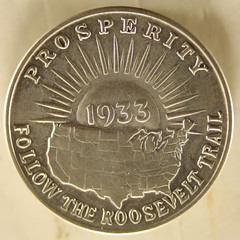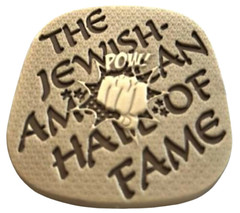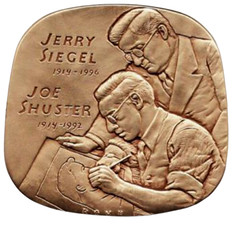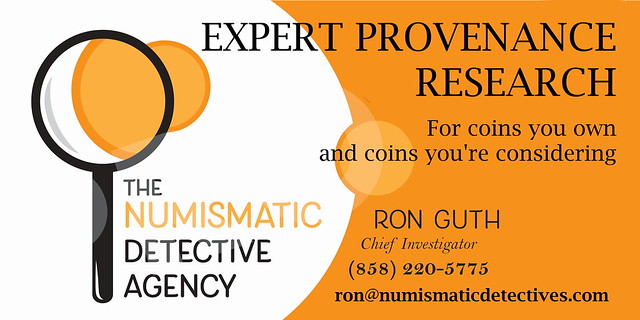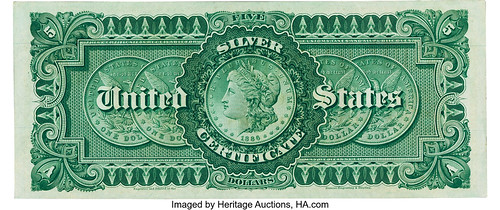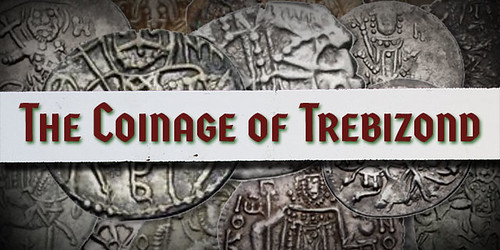
Visit our NBS Sponsors


About UsThe Numismatic Bibliomania Society is a non-profit association devoted to the study and enjoyment of numismatic literature. For more information please see our web site at coinbooks.org SubscriptionsThose wishing to become new E-Sylum subscribers (or wishing to Unsubscribe) can go to the following web page link MembershipThere is a membership application available on the web site Membership Application To join, print the application and return it with your check to the address printed on the application. Print/Digital membership is $40 to addresses in the U.S., and $60 elsewhere. A digital-only membership is available for $25. For those without web access, write to: Charles Heck, Treasurer AsylumFor Asylum mailing address changes and other membership questions, contact Chuck at this email address: treasurer@coinbooks.org SubmissionsTo submit items for publication in The E-Sylum, write to the Editor at this address: whomren@gmail.com BUY THE BOOK BEFORE THE COINSale CalendarWatch here for updates! |
- WAYNE'S WORDS: THE E-SYLUM OCTOBER 17, 2021
- HARTUNG & HARTUNG AUCTION 150
- NEW CATALOG: RAQMU COLLECTION OF JORDAN
- NUMISMATIQUE ASIATIQUE SEPTEMBER 2021
- NEWMAN PORTAL ADDS GLENDINING SALES
- VIDEO: OCTOBER 2021 USMEX COIN CONVENTION
- PHYSICAL BITCOINS, BOGGS, AND EXPENSIVE PIZZA
- DOLLARS AND BITS
- NOTES FROM E-SYLUM READERS: OCTOBER 17, 2021
- VINTAGE COIN ENVELOPES
- LEGEND AUCTIONS 10/28/2021 PRESALE ANALYSIS
- OCTOBER 2021 PAN SHOW EDUCATIONAL PROGRAMS
- 2021 C4 CONVENTION EDUCATIONAL PROGRAMS
- VOCABULARY TERM: FORM MOLD
- THE CHAPMAN BROTHERS
- THE SAINT GAUDENS NATIONAL HISTORIC PARK
- MDC MONACO AUCTION 8 HIGHLIGHTS
- STEPHEN ALBUM NOVEMBER 2021 INTERNET SALE 12
- NUMISMATIC NUGGETS: OCTOBER 17, 2021
- COPPER STATERS OF THE BOSPORAN KINGS FOUND
- HOW YAP STONES PAVED THE WAY FOR BITCOIN
- WITHOUT MONEY, GALAPAGOS RESIDENTS BARTER
- NEWLY DISCOVERED 1659 LORD BALTIMORE SHILLING
- SAG HARBOR BUST HALF DOLLAR HOARD
- 1933 ROOSEVELT LUCKY TILLICUM TOKEN
- SPACE SHUTTLE MEDALS
- SUPERMEN JEWISH-AMERICAN HALL OF FAME MEDAL
- WHEN THE U.S. DEFAULTED ON ITS OBLIGATIONS
- LOOSE CHANGE: OCTOBER 17, 2021
Click here to read the thin version on the web
Click here to subscribe
Click here to access the complete archive
To comment or submit articles, reply to whomren@gmail.com
Content presented in The E-Sylum is not necessarily researched or independently fact-checked, and views expressed do not necessarily represent those of the Numismatic Bibliomania Society.
WAYNE'S WORDS: THE E-SYLUM OCTOBER 17, 2021
 New subscribers this week include:
Alex Brown,
Hiep Hoaung,
Lori Kraft,
and Keith Mawhinney of the Numismatic Society of Ireland (Northern Branch).
Welcome aboard! We now have 6,730 subscribers.
New subscribers this week include:
Alex Brown,
Hiep Hoaung,
Lori Kraft,
and Keith Mawhinney of the Numismatic Society of Ireland (Northern Branch).
Welcome aboard! We now have 6,730 subscribers.
Thank you for reading The E-Sylum. If you enjoy it, please send me the email addresses of friends you think may enjoy it as well and I'll send them a subscription. Contact me at whomren@gmail.com anytime regarding your subscription, or questions, comments or suggestions about our content.
This week we open with a numismatic literature sale, a new catalog and periodical issue, updates from the Newman Numismatic Portal, physical bitcoins and more.
Other topics this week include vintage coin envelopes, upcoming coin shows, the Chapman Brothers, auction previews, yap stone money, a Lord Baltimore shilling discovery, Space Shuttle medals, and the Lucky Tillicum token.
To learn more about the Jotosen Medallions, Glendining auction sales, the bitcoin pizzas, dollars and bits, Michael Joffre, numismatic educational programs, the Saint Gaudens National Historic Park, the National Currency Civil War Token, barter on the Galápagos Islands, the Sag Harbor Half Dollar hoard, Javanese Magic Coins, and when the U.S. defaulted on its financial obligations, read on. Have a great week, everyone!
Wayne Homren
Editor, The E-Sylum
HARTUNG & HARTUNG AUCTION 150
Auction 150 of Hartung & Hartung in Munich will take place on November 2, 2021. Over 250 works of numismatic literature from the libraries of Dr. Hubert Lanz and Dr. Walter Grasser are featured in lots 373-604. Eric Vanhove and Martin Kaplan passed along a note on the sale they saw in the October 14, 2021 CoinsWeekly email. Thanks! Some great books! -Editor
NEW CATALOG: RAQMU COLLECTION OF JORDAN
As noted last week, hardcopies of the WBNA Raqmu Collection of Jordan catalog are available for purchase. The catalog of this specialized collection will be a useful reference. -Editor
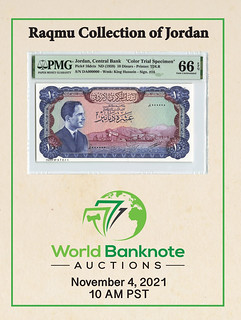 World Banknote Auctions has now launched Raqmu Collection of Jordan at
www.worldbanknoteauctions.com. This sale is open now and closes on November 4, 2021, with live bidding that day at 1 PM Eastern / 10 AM Pacific.
World Banknote Auctions has now launched Raqmu Collection of Jordan at
www.worldbanknoteauctions.com. This sale is open now and closes on November 4, 2021, with live bidding that day at 1 PM Eastern / 10 AM Pacific.
This collection, put together over several decades by a dedicated collector, contains both issued notes, specimens and proofs. It is highlighted by a complete specimen book of the second issue, prepared by Thomas de La Rue as a presentation piece in 1955. The entire collection contains 182 lots, ranging from the first issue dated 1949 to the series introduced in 2002.
We have created our first printed catalog for this collection. A limited number of copies will be distributed at the Den Bosch Paper Money Fair in the Netherlands held October 23/24. We will also have select highlights on display at our table, K-8. If you are not attending the show you can purchase a copy of the printed catalog for a minimal cost below.
NUMISMATIQUE ASIATIQUE SEPTEMBER 2021
Here are the contents of the latest issue of Numismatique Asiatique. Topics include the Japan Mint, the Pondicherry Cache, and Chinese porcelain tokens for Siam. -Editor
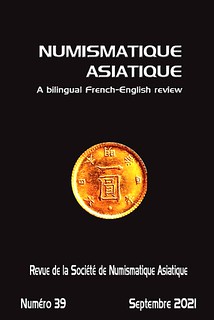 Editorial
Editorial
2021 : Les 150 ans du Japan Mint
2021 : 150 years of the Japan Mint
JAVA
Pacifique Chardin's Javanese Magic Coins
by Joe Cribb
JAPAN
An Introduction to Jotosen Medallions
by Craig Greenbaum
Une monnaie japonaise découverte à Villemur-sur-Tarn
by Marie-Laure Le Brazidec
INDIA
L'énigme de la cache de Pondichéry
by Daniel Cariou
INDOCHINA
La Banque de l'Indochine face aux problèmes de traduction en chinois
by François Joyaux
NEWMAN PORTAL ADDS GLENDINING SALES
The latest addition to the Newman Numismatic Portal is the series of Glendining numismatic sale catalogs. Project Coordinator Len Augsburger provided the following report. -Editor
Newman Portal Scans Glendining Auction Sale Catalog Series
The Glendining numismatic sales form a near endless series, numbering at least 1,435 catalogs published since 1901. Newman Portal has been processing this group at the American Numismatic Society for several months and has now completed scanning of the comprehensive set held by that library. Many thanks are in order, to David Hill, ANS librarian, Lara Jacobs, Internet Archive scanning associate, Bonham's, for granting permission to scan this series, and collector and author Eric Hodge for originally facilitating this project.
One interesting catalog in this series is the March 12, 1958 sale featuring a collection of medals related to all aspects of the book – printing, booksellers, authors, even papermakers. This collection included several hundred such pieces, generally 18th and 19th century European, which are featured mostly in group lots. Examples such as 1836 Leipzig gold medal commemorating the opening of the Booksellers Exchange are found, or an 1823 Haarlem gold medal marking the fourth centenary of printing. Sadly none of these pieces are plated, but this catalog will still serve as a reference resource for the genre.
Image: header for the section on printing medals
Link to Glendining series on Newman Portal:
https://nnp.wustl.edu/library/auctioncompanydetail/512958
THE BOOK BAZARRE
VIDEO: OCTOBER 2021 USMEX COIN CONVENTION
These are selections from the David Lisot Video Library that feature news and personalities from the world of coin collecting. David has been attending coin conventions since 1972 and began videotaping in 1985. The Newman Numismatic Portal now lists all David's videos on their website at:
https://nnp.wustl.edu/library/multimediadetail/522852
Here's one on the upcoming USMEX Coin Convention. -Editor
USMEX Coin Convention Returns to Scottsdale October 21-23, 2021.
VIDEO: 2:00.
Max Keech, Partner, World Numismatics LLC,
David Lisot, CoinTelevision.com.
PHYSICAL BITCOINS, BOGGS, AND EXPENSIVE PIZZA
More On Physical Bitcoins
Jeff Koyen writes:
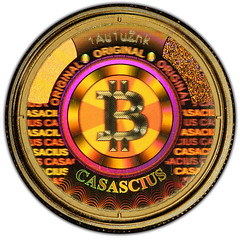 "I remember these and other physical coin sales during the early days of bitcoin. At the time, they felt like a weird attempt to legitimize a virtual concept through the language of traditional currency.
"I remember these and other physical coin sales during the early days of bitcoin. At the time, they felt like a weird attempt to legitimize a virtual concept through the language of traditional currency.
"It still feels like that, to be honest. But WOW! I had no idea anyone had produced a 1000 BTC version. And I can't believe the owner never redeemed it. (According to a bitcoin wiki, there are three unopened 1000 coins, as well as two unopened 1000 BTC bars.)
"That's the thing about crypto: Every time someone talks about how the "10,000 bitcoin pizza" would be worth $500M today, they're missing the point. A very small handful of early crypto miners have held onto their piles of BTC. For most, it was impossible to resist BTC at $50, $500, or $5000, or $25,000.
"Imagine holding onto 1000BTC for more than 10 years... It's staggering.
"I have to believe that Boggs would've loved this."
DOLLARS AND BITS
Before Bitcoin there were just bits. Not the computer kind - those weren't invented yet. A "bit" was a "piece of eight" - a Spanish dollar cut into eight equal pieces to make small change. That's where the quarter got its old nickname - "two bits". Last week we had a great discussion about denominations, and there are many seemingly odd denominations (in dollars, anyway) that make more sense when seen in terms of bits, such as the common 12 1/2 cent and 6 1/4 cent obsolete banknotes (1 bit and a half bit, respectively.
We discussed the reported note denomination of "$1.56-1/4". Dave Schenkman described it as the equivalent of 25 bits and my calculator and I agreed, but I think we were off by a factor of two, as Martin Purdy pointed out. -Editor
NOTES FROM E-SYLUM READERS: OCTOBER 17, 2021
David Vice Contact Found
Regarding author David Vice,
Randy Weir writes:
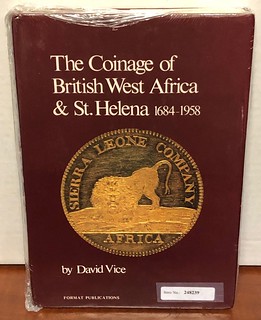 "I have been a dealer in Coins of the British Commonwealth for almost 50 years. I have had quite a few dealings with David and Gary at Format coins. I was around when the first of the Kings Norton mint material came to market and I may be able to help Kavan Ratnatunga with his questions about the KN mint material.
I really do enjoy your newsletter so thank you for that"
"I have been a dealer in Coins of the British Commonwealth for almost 50 years. I have had quite a few dealings with David and Gary at Format coins. I was around when the first of the Kings Norton mint material came to market and I may be able to help Kavan Ratnatunga with his questions about the KN mint material.
I really do enjoy your newsletter so thank you for that"
Thanks! I put Randy and Kavan in touch. -Editor
To read the earlier E-Sylum article, see:
NOTES FROM E-SYLUM READERS: OCTOBER 10, 2021 : Query: David Vice Contact Sought
(https://www.coinbooks.org/v24/esylum_v24n41a10.html)
Other topics this week include Predominantly Catholic Countries in Asia, the Goebel Coin Collector, and J. S. Bach's fishy gold ducat story. -Editor
VINTAGE COIN ENVELOPES
Dave Lange passed along some interesting numismatic ephemera. Thanks! -Editor
Since my interest in vintage coin holders is well known, I recently was contacted by a longtime coin collector who offered me a large assortment of old coin envelopes issued by Littleton Stamp Company and Littleton Coin Company. I jumped at this chance to add such memorabilia to my collection, and there are about five dozen pieces. All are written up for coins, but the earliest are inscribed for LSC. I believe it was in 1960 that LCC achieved its own identity, but the earlier envelopes reveal that Littleton had been selling coins for some years prior to that time.
I'm attaching images of envelopes from both entities. The prices on the LSC envelopes clearly suggest the late 1950s, while those on the LCC envelopes appear to be from the early-mid 1960s. I remember similar pricing when I began collecting coins in 1965, though I didn't do any business with Littleton in my early years. I don't recall when I first learned of it, but it must have been in the early 1970s when I began getting COINage and COINS Magazines regularly. I received a few of these envelopes then, and I suspect the company still may be using this method of presentation for raw coins.
LEGEND AUCTIONS 10/28/2021 PRESALE ANALYSIS
Ron Guth is offering a new research product for auction bidders. -Editor
I've prepared a pre-sale analysis of Legend Rare Coin Auctions 10/28/2021 sale. The purpose of this product is to identify coins that are of Condition Census (Top Ten Finest) level and to provide additional provenance and price and grade history. This information is meant to augment the excellent work provided by Legend's catalogers and to give bidders more information on which to formulate their bids.
OCTOBER 2021 PAN SHOW EDUCATIONAL PROGRAMS
The Pennsylvania Association of Numismatists shows keep getting bigger and better. Here's the lineup of speakers during the three-day show. I'll be attending myself and giving one of the presentations. I hope to see a number of E-Sylum readers while in town. -Editor
1:00pm - Brett Irick, ANA Judge, CSNS Vice President
Topic: ANA Competitive Exhibits Judging Class
3:00pm - Rick Lank, Becky Rush
Topic: The Furious Flight of the Confederate Treasure Train - Where Did All the Southern Dough Go?
and a sequel (a new book)
4:30pm - Ben Franklin and Abraham Lincoln - performed by Patrick McBride and Dennis Boggs
Topic: Two Wars, Two Centuries
2021 C4 CONVENTION EDUCATIONAL PROGRAMS
Bibliophiles attending the upcoming Baltimore Whitman Coin Expo have a great reason to join the Colonial Coin Collectors Club (C4) - three book-themed educational programs at a members-only event Thursday evening. -Editor
Thursday evening, November 18
(Sheraton Inner Harbor, Harborside Room)
— 7:30 pm: Dennis Tucker, 75 Years of Colonials in the Redbook
— 8:30 pm: Jack Howes, The Making of the New Machin's Mills Book
— 9:30 pm: Randy Clark, Recent Literature for Attributing Connecticut Coppers (1785-1788)
VOCABULARY TERM: FORM MOLD
Here's another entry from Dick Johnson's Encyclopedia of Coin and Medal Terminology. Quite detailed, it goes into some of the mechanics behind the making of medals. -Editor
Form Mold. A holding device made of lead or epoxy to hold large circular medals one at a time in a lathe while they are being trimmed. The form mold acts as a chuck to hold the medal secure while its flash or excess material is turned off on the lathe. Removing the flash is only required from medals struck by open face dies (medals larger than two inches and not struck with a collar). A form mold is a kind of jig and is also called lead form or lead chuck. Workers at the U.S. Mint call these chucks "carriers."
THE CHAPMAN BROTHERS
American Numismatic Biographies author Pete Smith submitted this article on the Chapman brothers of Philadelphia. Thank you! -Editor
The Chapman brothers, Samuel Hudson Chapman and Henry Chapman, were the first career coin dealers in the United States. They were born in Philadelphia to Irish Quaker immigrants Henry (1827-1907) and Jane (1827-1891) Hudson Chapman. The senior Henry went broke in the tea business and went into business as a money or specie broker.
The children collected stamps and went to work as teenagers for coin dealer John W. Hazeltine in 1876. By 1878, the two were experienced enough to start their own coin company, S. H. & H. Chapman, Numismatists and Antiquaries.
THE SAINT GAUDENS NATIONAL HISTORIC PARK
The Northeast Numismatics blog has a nice article about the Saint Gaudens National Historic Park in Cornish New Hampshire. -Editor
Fall is a wonderful time to travel in New England, especially by car. This is the season that many thousands of ‘leaf peepers' will descend upon sleepy towns in the northeast to be dazzled by vivid displays of the changing season. Apple orchards, cider donuts, pumpkin-fests, decorative gourds and of course the foliage are among the many wonderful features to enjoy during your stay.
MDC MONACO AUCTION 8 HIGHLIGHTS
Here are some highlights from this week's MDC Monaco sale, from their recent email announcement. Some great coins here! -Editor
Do not miss next MDC Monnaies de Collection auction on Wednesday 20th and Thursday 21st October 2021 in Monaco Monte Carlo.
Our expert Nicolas Gimbert will be delighted to welcome you to the auction. Live bidding will take place on BIDDR and the catalogue is also available on our website.
STEPHEN ALBUM NOVEMBER 2021 INTERNET SALE 12
Here's the announcement for the November 2021 Internet Auction 12 sale from Stephen Album Rare Coins. -Editor
Stephen Album Rare Coins will hold its Internet Auction 12 at its offices in Santa Rosa, California on November 1, 2021. Internet pre-bidding has begun and can be accessed through their website.
The Auction is made up of an even 1,250 lots of Ancient, Islamic, Chinese, Indian, and General World Coins, and Ethnographic Money. Highlighted groups include:
NUMISMATIC NUGGETS: OCTOBER 17, 2021
Here's a selection of interesting or unusual items I came across in the marketplace this week. Tell us what you think of some of these. -Editor
KM455.19 variety, Louis XV type. Struck at the Amiens mint.
A totally original, suitably crusty, old toned example of this early quarter-sized silver issue often collected as part of the U.S. Colonial series.
Offered by John Agre's Coin Rarities Online. -Editor
To read the complete lot description, see:
1720-X French Colonies 1/3 Ecu
Louis XV Type
(https://www.coinraritiesonline.com/product/1720-x-french-colonies-20s/)
Other topics this week include a Turks and Caicos Islands banknote proof, the National Currency Civil War token, and the 1907 High Relief Wire Edge double eagle. -Editor
COPPER STATERS OF THE BOSPORAN KINGS FOUND
Arthur Shippee passed along this article found via The Explorator newsletter. Thanks. To subscribe to Explorator, send a blank email message to: explorator+subscribe@groups.io. -Editor
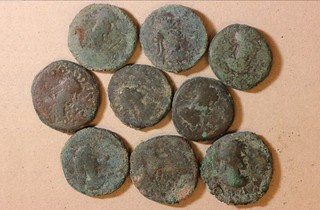 Phanagoria was the largest ancient Greek city on the Taman peninsula and was founded by Teian colonists around 543 BC, and developed into a Greek centre of trade between the coast of the Maeotian, and the countries on the southern side of the Caucasus.
Phanagoria was the largest ancient Greek city on the Taman peninsula and was founded by Teian colonists around 543 BC, and developed into a Greek centre of trade between the coast of the Maeotian, and the countries on the southern side of the Caucasus.
The coin hoard was discovered during the third season of excavations, where archaeologists unearthed an amphora containing 80 copper staters (coins), whilst researching evidence of a destruction layer caused by fire from the 6th century AD.
HOW YAP STONES PAVED THE WAY FOR BITCOIN
Arthur Shippee also passed along this article found via The Explorator newsletter about a study that found similarities between modern bitcoins and the giant stone money of Yap. Thanks! Interesting parallels. -Editor
In "Banking on Stone Money: Ancient Antecedents to Bitcoin," published in January 2020 in the journal Economic Anthropology, Scott M. Fitzpatrick of the University of Oregon Department of Anthropology teamed with Inman Research Scholar and finance professor Stephen McKeon of the Lundquist College of Business to explore Bitcoin's precedents as "rooted in the ancient past, which involved the production, movement, and use of traditional forms of 'currency,' the most visible and prominent of which were the famous stone money of Yap."
WITHOUT MONEY, GALAPAGOS RESIDENTS BARTER
For years now we've been inching closer and closer to a world where coins and paper money no longer exist in daily commerce, as money goes electronic. But what would happen if money itself goes away? Well, the world might start to look like it did before the concept of money was invented. Here's what happened during the pandemic in the Galápagos Islands, an isolated chain off Ecuador - yes, the same remote place Charles Darwin visited in 1834 and began forming his theory of evolution.
I only came across this March 20, 2021 Outside essay this week. Here's an excerpt - see the complete article online. -Editor
As traffic and then goods started to slow from the continent, Galápageños turned to each other and a simpler way of life to take care of themselves.
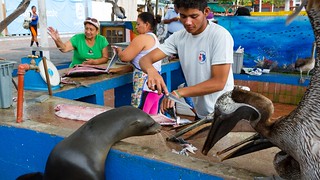 During the strict 11-week lockdown that began in March, the majority of the 30,000 residents entered into a barter system. Fruit was traded for meat; milk for English lessons. Clothes were handed down, not just within families but through the community. At one point, Solís swapped 50 oranges for some dental work. Elsewhere, Brett and Maria Peters, the affable owners of Galápagos Deli in Puerto Ayora, traded produce they couldn't use in their restaurant for houseplants to decorate their new home. Nature guide Lola Villacreses, realizing she wasn't going to be aboard any cruise ships for the foreseeable future, did a crash course online and began growing fruits and vegetables on her smallholding in the fertile Santa Cruz Highlands. During my two-month stay, whenever I bumped into her around Puerto Ayora, she gave me a bucket of tomatoes.
During the strict 11-week lockdown that began in March, the majority of the 30,000 residents entered into a barter system. Fruit was traded for meat; milk for English lessons. Clothes were handed down, not just within families but through the community. At one point, Solís swapped 50 oranges for some dental work. Elsewhere, Brett and Maria Peters, the affable owners of Galápagos Deli in Puerto Ayora, traded produce they couldn't use in their restaurant for houseplants to decorate their new home. Nature guide Lola Villacreses, realizing she wasn't going to be aboard any cruise ships for the foreseeable future, did a crash course online and began growing fruits and vegetables on her smallholding in the fertile Santa Cruz Highlands. During my two-month stay, whenever I bumped into her around Puerto Ayora, she gave me a bucket of tomatoes.
NEWLY DISCOVERED 1659 LORD BALTIMORE SHILLING
Stack's Bowers Director of Consignments and Numismatics James McCartney published a blog article about a great new metal detecting discovery - a 1659 Lord Baltimore Shilling unearthed in Suffolk, VA. -Editor
Stack's Bowers Galleries is proud to offer a newly discovered 1659 Lord Baltimore shilling in our November 2021 Showcase Auction. It will be presented alongside an incredible selection of Early American coins in our official auction for the Colonial Coin Collectors Club, better know as C4. With bold AU definition, this new discovery is certainly one of the sharpest Baltimore shillings known. Generally untoned and dove-grey, it exhibits scattered regions of olive patina on both sides. Significant marks are minimal, with only minor friction noted in the obverse fields. It was virtually brand new when it entered the soil over 400 years ago, and the portrait detail including the eyes, hair, and profile are truly astounding. It is a very pleasing example of an elusive and historic issue, coined for Sir Lord Baltimore Cecil Calvert to circulate in his proprietary colony of Maryland in the early 1660s.
SAG HARBOR BUST HALF DOLLAR HOARD
Dave Bowers published a Stack's Bowers blog article on the 1880 dispersal of a physician's hoard of 1836 half dollars. -Editor
It must have been a free-for-all among collectors on Long Island, New York in 1880, by which time the Capped Bust half dollars (minted 1807-1836) had long since disappeared from circulation. In fact, such pieces had not been generally seen since the early 1850s, when many if not most remaining pieces were melted down for bullion when the price of silver rose on international markets.?
THE BOOK BAZARRE
1933 ROOSEVELT LUCKY TILLICUM TOKEN
This week I came across a token I'd never seen with a mysterious slogan on it: "Lucky Tillicum". -Editor
SPACE SHUTTLE MEDALS
The August dinner of my Northern Virginia numismatic social group Nummis Nova was hosted up in Maryland by Julian Leidman at Jerry's Seafood. We had an excellent meal as always, and E-Sylum reader Chip Howell attended as my guest, where he heard Eric Schena recall witnessing early flights of the Space Shuttle in his youth. Chip passed along a video from the era (linked below) which inspired Eric to discuss his experiences and a numismatic connection. Thanks! -Editor
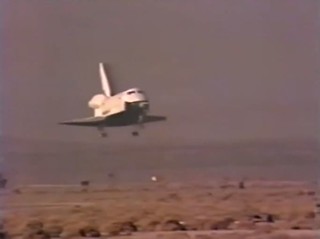 My family was stationed at Edwards AFB in Southern California in the late 1970s and early 1980s and was there for some of the Enterprise glide flights and even got up close to the Enterprise a couple of times. I very much remember the 747 carrier plane; it was kept near the giant lifting gantry along the northern part of the dry lake bed near the road heading out towards Boron. Out of the first 12 landings, I can chalk up 9 of them.
My family was stationed at Edwards AFB in Southern California in the late 1970s and early 1980s and was there for some of the Enterprise glide flights and even got up close to the Enterprise a couple of times. I very much remember the 747 carrier plane; it was kept near the giant lifting gantry along the northern part of the dry lake bed near the road heading out towards Boron. Out of the first 12 landings, I can chalk up 9 of them.
I was fortunate as a kid in a way because Dad was tangentially connected to the space program, though not as an astronaut, but were around a number of space flight pioneers. For instance, my babysitter's father helped suit up the Gemini and Apollo astronauts – his den was covered with autographed photos. I did meet a couple of astronauts, plus an X-15 pilot – (Pete Knight). Dad used to take me to the flight line every once in a while, especially if there was something neat there (like an SR-71 and the Enterprise, of course).
SUPERMEN JEWISH-AMERICAN HALL OF FAME MEDAL
The latest medal in the Jewish-American Hall of Fame series honors Superman creators Jerry Siegel and Joe Shuster. POW! -Editor
Announcing High Relief Art Medals and Zoom Induction Ceremony Honoring Jerry Siegel and Joe Shuster, the Creators of Superman
Large 2-inch limited edition art medals commemorating Jerry Siegel and Joe Shuster, the creators of Superman, the first comic book super-hero, are available from the non-profit Jewish-American Hall of Fame on a first come-first served basis. These high relief 3 oz. art medals, designed by award-winning medallist Eugene Daub, have maximum mintages of only 150 bronze, 75 pure silver and 35 gold-plated pure silver. These are offered for contributions of $50, $200 and $250, respectively. Mention that you read about this in The E-Sylum and you can get a 20% discount. You can order with paypal using email address of directorjahf@yahoo.com or by calling 818-225-1348.
WHEN THE U.S. DEFAULTED ON ITS OBLIGATIONS
This Washington Post missed the cut for last week's issue and is no longer timely, but but it's a perennial topic that will come back in the news as early as December. -Editor
Congressional fights over raising the debt limit often result in superlatives. A failure to raise the debt limit would almost certainly shake the financial markets unless, perhaps, it was only a brief, technical breach with a clear resolution in sight.
But one superlative that should be retired is unprecedented.
The debt limit has only been in effect since 1917 — Congress got tired of having to approve every spending request from the Treasury during World War I — but there are at least four instances in U.S. history when one could argue the United States defaulted on its obligations.
LOOSE CHANGE: OCTOBER 17, 2021
Here are some additional items in the media this week that may be of interest. -Editor
Mike Markowitz published an article in his CoinWeek Ancient Coin Series on the Coinage of Trebizond. -Editor
THE SOUTHERN SHORE of the Black Sea is a narrow strip of fertile land–famed for excellent hazelnuts–between the sea and the rugged Anatolian plateau. The coastal fortress of Trebizond (Trapezus
to the ancient Greeks and Romans, now Trabzon, Turkey) was the capital of a small, but remarkably durable medieval empire, remembered as the last independent outpost of Byzantine Civilization. We know something about the coinage of this lost empire thanks to diligent research by a handful of scholars and collectors during the past century, notably the great British numismatist Simon Bendall (1937-2019).
To read the complete article, see:
CoinWeek Ancient Coin Series: The Coinage of Trebizond
(https://coinweek.com/ancient-coins/coinweek-ancient-coin-series-the-coinage-of-trebizond/)
Other topics this week include the "JOP" counterstamps. -Editor

